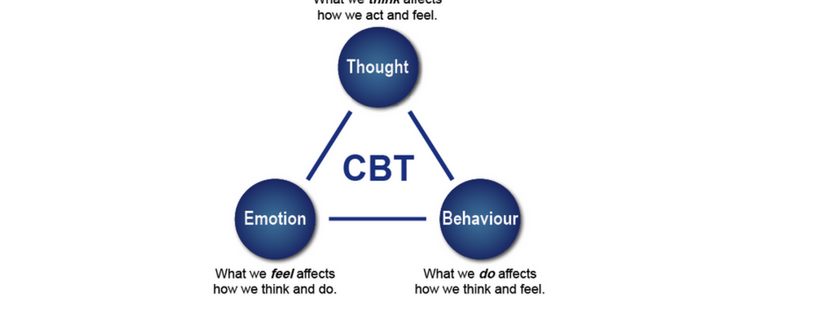Clean Language
Mindfulness is explored in many different ways. I have been fascinated with the work of Nick Pole, a Shiatsu practitioner. His work on “clean language” is fascinating.
During my regression work I cover this topic with a total body scan, exploring communication within the body that may be hindering progress. To book and appointment contact jane-osbornembs@outlook.com.
The most important life skill of them all is learning how to listen to yourself in a relaxed, authentic and embodied way. When the mind makes friends with the body, insight, intelligence and inspiration flow naturally into your everyday life. When you’re at home in your body, you open your mind.
That’s how the real you comes through Nick Pole, MA, MRSS(T) has more than 25 years experience integrating eastern and western approaches as a mind-body therapist. With a background in Shiatsu, neuro-linguistic programming (NLP) and Clean Language, he has also trained in Mindfulness-Based Cognitive Therapy and is the director of London Mindful Practitioners, a group for health professionals who use mindfulness in their work. Lorraine Herron with be practicing her skill of Cognitive Therapy on our Healing Weekend.http://www.jane-osborne.com/product/mystic-magic-forest-healing-weekend-12th-14th-october-2018/
He has taught his course on Clean Language for Shiatsu therapists internationally for more than 10 years, and is the author of the forthcoming book, Words That Touch: How to Ask Questions Your Body Can Answer.
Check out the interview with him that follows in Pysch Central:
https://pro.psychcentral.com/clean-language-in-therapeutic-practice-q-a-with-nicholas-pole/
What is Clean Language, and what is its function in the context of healing work?
In Clean Language, we ask very simple questions, and each question is built around the patient’s own words to help him or her explore issues by discovering the metaphors, gestures and felt sensations behind those words.
Symptoms and feelings are usually there to tell us something, and Clean Language is a very direct way to find out what that something might be.
Clean Language is a mindful way to use language in healing work for two reasons. First, it helps patients to bring their attention to their direct, in-the-moment experience and to do that with curiosity and openness to what’s happening, rather than through their existing labels and narratives.
Secondly, it helps us as practitioners to be more mindful of anything we say, which might be coming more from our own map of the world than the client’s.
As practitioners, we all have our own interpretations, judgments, preferences and prejudices about what the client may need, so this language is called ‘Clean’ because the questions are designed to keep all the stuff that comes from the practitioner out of the client’s space.
In your new book, you write, “Clean Language takes a fundamentally different approach to what needs to happen between client and practitioner.” How is this approach fundamentally different from the approach taken in other traditional therapies?
In both eastern and western medicine, the doctor or the practitioner is traditionally the expert. The most important principle of all in using Clean Language is to reverse that; to work towards a relationship where the client is in charge of the process.
It’s a more systemic approach and of course, it’s not unique to Clean Language, but the questions we ask are very good at facilitating that kind of relationship.
In every area of healthcare, we have all kinds of pressures on us to “get results” for our clients. The whole point in Clean Language is for the client to learn how to get their own results, by bringing this kind of mindful awareness to what is really going on for them.
Tell us a bit about your own background and practice and your unique combination of shiatsu, Clean Language and mindfulness that you do in your work with clients.
I don’t know if it’s unique, but there certainly aren’t many bodywork therapists using Clean Language yet, which is why I wrote the book.
My dad was a successful academic historian; he spent his working life reading, writing, and working with words. Maybe it was some kind of reaction to that that I found myself drawn to studying Japanese Shiatsu, working with touch and this very Zen emphasis on what is beyond intellect and beyond words. Looking at the moon and not the finger pointing at it, and all that.
But as I got more experienced in shiatsu, I found language beginning to tap me on the shoulder again. I wanted to find a way to help my clients make sense of the wordless sensations of bodywork and how it might relate to their issues in life. In the west, this is what clients expect.
When I found Clean Language, I realized its potential to help patients make these connections between mind and body, left brain and right brain or however you want to put it. I loved using it, but not all my clients did. When people are coming for bodywork, they can be suspicious of too much talk.
Then, when my father died, I suddenly started getting quite acute anxiety and depression—worse than I’d ever experienced—though my father had suffered from that all his adult life.
By one of those strange coincidences, a friend told me about a centre where they were doing scientific research on the effectiveness of mindfulness in treating depression. It was the Oxford Mindfulness Centre, and to my surprise it was right at the top of the road my dad had lived on for 20 years.
I did their training course in mindfulness teaching—just before mindfulness started to be the buzzword it is now—and I found it not only got rid of my anxiety and depression, it was also the missing ingredient, the perfect medium to blend Clean Language with meridian-based bodywork.
Like Clean Language, it is about teaching the client life skills—any therapeutic results are a side effect of that learning. And like shiatsu, the first principle of mindfulness (despite its name) is to help us live in a more embodied way.
You say that the use of Clean Language in sessions can help clients along the way to living a more embodied life. From your perspective, and perhaps an overall somatic-focused perspective, what does an embodied life mean or look like?
From a Clean perspective, that would be different for everyone. But when I asked one of my clients recently, what she said was this: “I’m learning to listen to my body and let it speak for itself and that gives me a sense of opening inside, like I’m becoming more alive to myself.”
I think that sense of aliveness—however each person experiences it—is the subjective essence of embodiment. But of course, from a neurological point of view, we’re learning more and more about how our minds are not disembodied computers stuck inside our skulls. The mind is, as professor Dan Siegel says, “embodied and embedded.”
The way we think has evolved from living in a human body and is also profoundly influenced by our culture and relationships, including our therapeutic relationships.
You mention something called the “triangle of trust” between the verbal mind, the body mind and the practitioner. What is this, how is it established and what is the benefit?
By “verbal mind” I mean the everyday, cognitive mind, which thinks in words and has its home mostly in the left hemisphere of the brain.
By ‘body mind’ I mean all those embodied ways of knowing that animals are so good at, and which we humans keep forgetting, until we get in touch with them again through things like yoga or dance or meditation, for example.
Through our embodied sense of being we know ourselves in a different way. The verbal mind finds it hard to understand that kind of intelligence. It sees the body as a machine made up of separate parts—just as western medicine does—and is very results-oriented, so when the body malfunctions, it wants it fixed.
It doesn’t want to listen to it, because it doesn’t know how to. Its primary medium is words and anything that can’t be described in words doesn’t really exist as far as this verbal mind is concerned, so it doesn’t trust the body and its messages. It prefers to medicate it rather than listen to it.
Of course, this is not true for everyone, but statistics show how true it is for most.
Normally, when clients talk about their body, they use the verbal mind’s vocabulary. They impose this mechanistic way of thinking on the body mind.
Any kind of language we can use that shows them how to turn that around—that allows them simply to listen to their body mind, and to be patient with its non-verbal messages—helps the client’s cognitive mind to trust the body.
Quite quickly you start to build an evidence base that shows the body mind has a language and a logic of its own and that it responds positively when listened to. The practitioner’s job is to facilitate that—to be like a mediator between verbal mind and body mind and asking Clean questions is an effective way of doing that.
So the triangle of trust is built between the practitioner and these two aspects of the mind, with their different and often conflicting values.
Researching my book I was very inspired by Dr Iain McGilchrist’s “The Master and His Emissary,” which is a brilliant update on the old left brain/right brain model.
The reason I was impressed was because it seems to mirror exactly my experience of how the verbal mind relates to symptoms in the body. His great contribution is to show that it’s not so much about what the two hemispheres do differently—since both sides of the brain are involved in almost anything we do—but about the different values the two hemispheres have.
The left hemisphere knows the world through language and dominates the way we communicate with the outside world. But it’s the right hemisphere that is much more tuned into direct felt experience and the embodied ways we know things that can’t necessarily be put into words.
Of course, the two sides of the brain communicate, and the more they do, the more we build the neurological pathways that help us trust our gut feelings, our heart-felt response, and the body’s self-healing ability.
Clean Language, like poetry, engages both sides of the brain. Through words we approach the wordless and eventually an answer comes that we can put words to.
I’ll be honest; the term “Clean Language” makes it sound like something that requires a great deal of control on the part of the therapist. It sounds like something that would take a lot of practice and be somewhat hard! Is that true?
It’s easy to get started with Clean Language. There are only 12 basic questions that you need to know. In that sense, it’s a lot easier to learn than most languages!
But as I said, it’s a very mindful way to use language, and like mindfulness, if you stay with it, it can take you as deeply into yourself as you care to go. So when you use it in therapeutic conversations, the more experience you have, the safer your clients will feel about exploring their own internal landscape and being accepting towards whatever comes up.
You cite three basic and versatile Clean Language questions in the book, and say that just these simple questions can help clients make a significant shift in whatever issue they’ve brought to you. What are those questions and why are they so impactful?
Remember, the power of Clean Language isn’t in the questions themselves. There’s nothing very special about them and you probably use them all the time. It’s about putting the client’s exact key words into the questions and inviting them to explore the next layer of meaning that those words may have.
When you do that, and trust that the client knows, somewhere inside, exactly what they need, things start to happen.
So the three basic Clean questions are:
And what kind of…?
And where is…?
And is there anything else about…?
I had a client who said she was exhausted from having to complete a project at work to a very tight deadline. So the first thing I asked her was, ‘And what kind of exhausted is that?’ She said, ‘It feels very tight around my heart‘. So I asked her, ‘And is there anything else about very tight around your heart?’ She said, ‘I really wanted to please them.’
The dialogue continued like this:
And is there anything else about really wanted to please them?
I feel something here (putting her hand on her abdomen).
And what kind of something?’
It’s like a layer around me.
And would it be okay to find out more about that layer around you?
It’s protection.
What kind of protection?
It comes out of here (indicating her abdomen) like threads of energy making up a layer of protection around me.
And is there anything else about those threads of energy?’
It’s really draining me.
With just these three basic questions, she had created a kind of ‘psycho-energetic’ map of how ‘really wanting to please’ her client had contributed to that exhaustion. From there, we started some meridian-based bodywork, using more Clean questions to help her ring awareness to other somatic and psychological aspects of the issue.
By the end, the tightness around her heart had released and she was thinking of ways to care a bit less about pleasing her clients and to care more about looking after herself.
For more about Clean Language and Nick Pole’s work, visit him online at www.nickpole.com.








